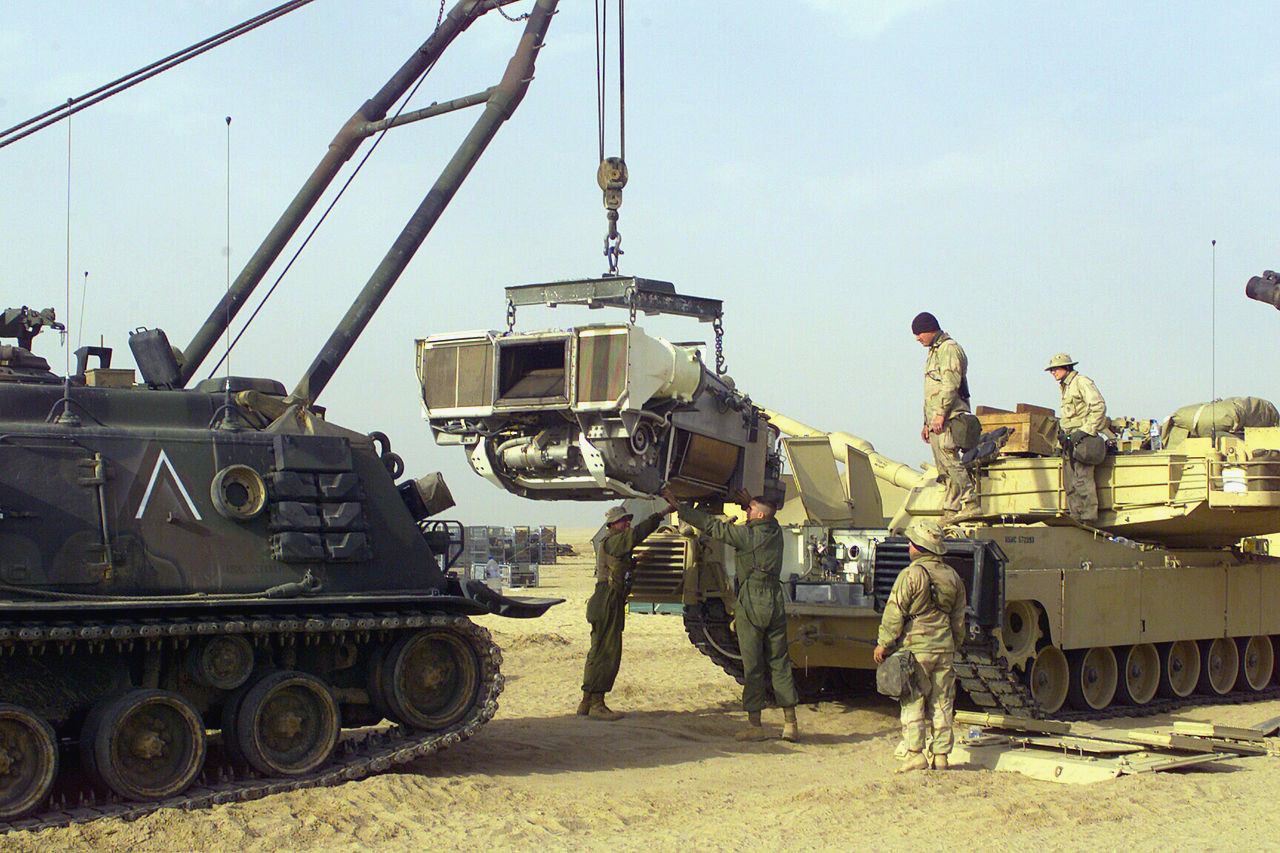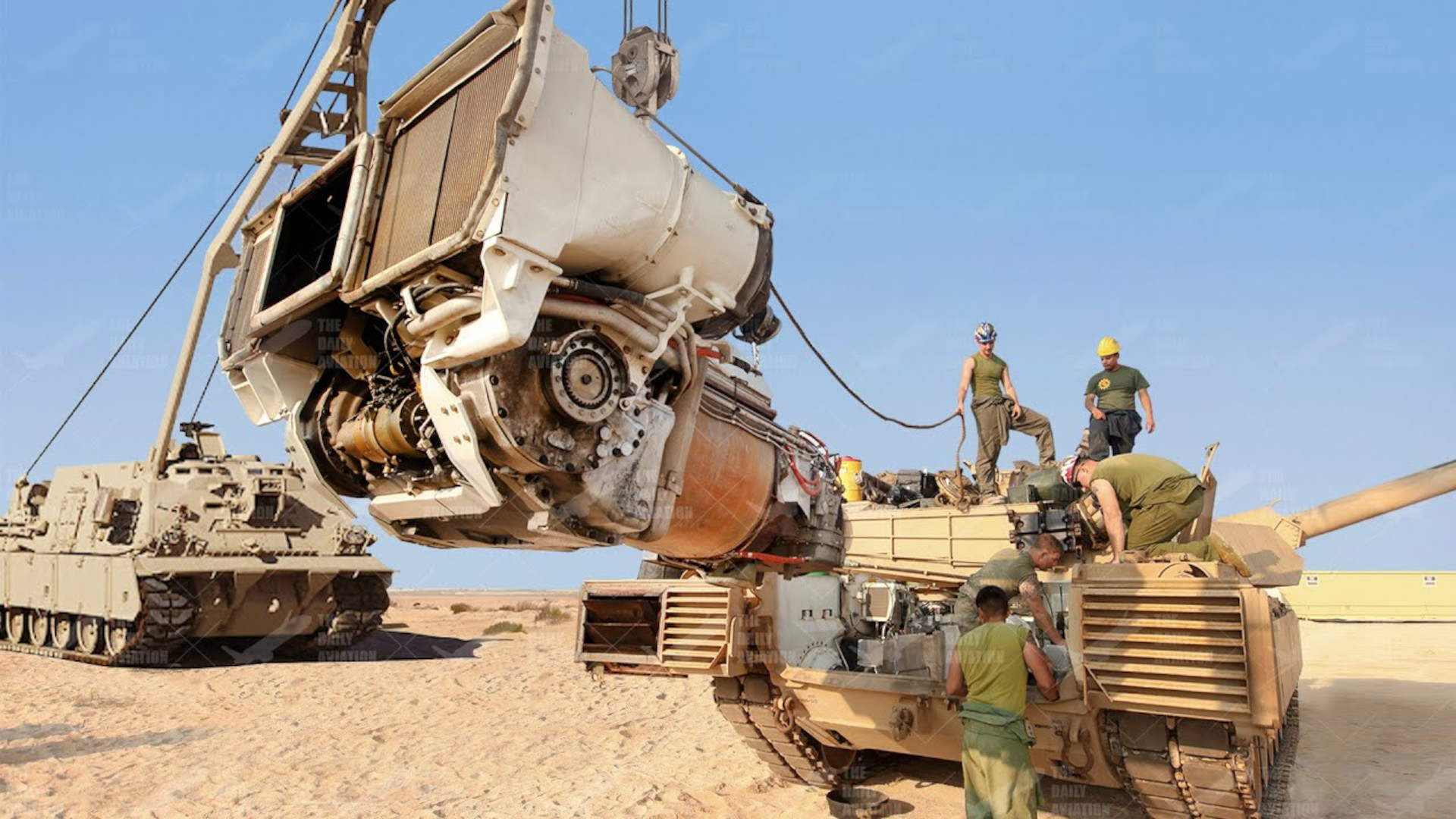The recent decision by the U.S. government to provide 31 M1A2 Abrams tanks to the Ukrainian military has been a very hot topic, even before the official announcement was made. There continue to be discussions about what these tanks will really offer Ukraine’s forces and about concerns that could they could be hard to operate and maintain, especially because of their complex and fuel-hungry gas turbine propulsion system. This all raises an interesting question about whether it might be possible to just fit them with a more traditional diesel internal combustion engine instead.
As it stands now, the U.S. government has confirmed that the Abrams for Ukraine will be based on the M1A2 variant. Beyond that, it is still not exactly clear how the tanks will be sourced and configured. There are already multiple A2 subvariants and the Ukrainian examples will have to be in an exportable configuration that will include, among other things, a different armor package from the ones found on U.S. military types. This is due to the highly classified and otherwise sensitive nature of the armor on American Abrams, which includes depleted uranium, as you can read more about in this recent War Zone piece.

The various M1A2 subvariants that exist now, as well as all previous production Abrams tanks, are powered by a single Honeywell AGT1500 turbine engine rated at 1,500 horsepower. The engine is combined with an Allison X1100-3B transmission and other components in a singular integrated propulsion unit known as the Full-Up Power Pack (FUPP).
The AGT1500 offers certain advantages over more traditional diesel engines that are used in other contemporary western main battle tanks, such as the German Leopard 2 series and British Challenger 2 tanks that Ukraine is also set to receive. These include faster acceleration and relatively quieter operation, the latter of which makes Abrams variants that much harder to detect.


This all comes at the expense of high fuel consumption rates, which depend on what type of fuel is used. While much attention is generally drawn to the AGT1500’s ability to run on jet fuel, it is a multi-fuel design that can be powered with diesel, marine diesel, or gasoline, according to a now-archived version of Honeywell’s website.
The idea of substituting the AGT1500 with a more traditional diesel engine on the Abrams is not hypothetical. General Dynamics Land Systems (GDLS), which is the current prime contractor behind the tank, has explored a number of alternative propulsion options involving more traditional diesel engines since the late 1990s.
In 1997, GDLS began exploring one diesel arrangement called the EuroPowerPack. This consisted of a 1,500 horsepower V12 MT-883 diesel engine from the German firm MTU linked to an HSWL 295TM transmission from another company in Germany, RENK. The company developed the EuroPowerPack-equipped Abrams as part of a pitch to the Turkish military.

GDLS tested a physical prototype featuring the MT-883/HSWL 295TM propulsion system in a modified hull and a turret from an M1A2 System Enhancement Package (SEP) variant.
“Testing included 300 miles of reliability, availability, and maintainability evaluations on five test courses and firing 70 main gun rounds at stationary and moving targets by General Dynamics and Department of Defense engineers,” according to a press release the company put out on April 11, 2000, an archived copy of which is available here. “The testing validated [the] successful integration of the diesel-powered chassis with the tank’s System Enhancement Package turret.”
“The effort demonstrates the flexibility of General Dynamics’ engineering staff and of the M1A2 Abrams tank to accept a variety of engines and transmissions,” that press release added. “The tank moves as well as the standard turbine-powered tank with no difference in target detection, identification or main gun accuracy. The testing confirms that the tank’s performance is not changed by the diesel engine and that it has a significantly lower operating cost.”
It’s not clear whether these statements would apply equally to a refit of the engine on more recent M1A2 SEP subvariants, which have only grown in weight and complexity.
Turkey ultimately decided to purchase German-made Leopard 2s, which are powered by a different type of MTU V12 diesel engine. MTU did offer the EuroPowerPack, and derivatives thereof, as an option for the Leopard 2 and other tanks. This propulsion system was used to power the initial batch of K2 tanks for South Korea and the United Arab Emirate’s “tropicalized” variant of the French Leclerc.
GDLS also offered a derivative of the EuroPowerPack, using a U.S.-made version of the MT-883 called the GD-883, as an option for the U.S. Army’s abortive XM2001 Crusader self-propelled howitzer and for re-engining the service’s M1s. A requirement for Crusader was to have a common engine with the Abrams tank. The Crusader program was canceled in 2002 over performance issues and cost growth.
In 1999, GDLS started work on another diesel configuration that used a Continental AVDS 1790 V12 diesel engine, rated at 1,500 horsepower just like the AGT1500, coupled with an Allison X7050 transmission. Versions of the AVDS 1790 have been used in other U.S. tanks and heavy armored vehicles, including variants of the M60 Patton and the M88 armored recovery vehicle. The Ukrainian military is set to receive a number of M88s along with its future M1A2s.

Later, GDLS built a Heavy Combat Vehicle Test Bed (HCVTB) based around a modified Abrams hull that had an MT-883 engine and an Allison 5250MX transmission, among other advanced features. It’s not immediately clear what relationship, if any, the HCVTB had to the prototype created to test MT-883/HSWL 295TM configuration.
The HCVTB, “while providing the same power as the gas turbine … will deliver a 50-percent increase in cruising range through enhanced fuel efficiency and a 37 percent reduction in maintenance costs owing to greater simplicity and higher commonality with commercial diesel engines,” according to an article published in the January-March 2015 issue of the U.S. Army’s Armor magazine.

Though the HCVTB appears to have largely disappeared from public view in the early 2010s, GDLS hasn’t given up on the idea of Abrams variants with new propulsion system arrangements that include diesel engines.
The next-generation AbramsX demonstrator that GDLS unveiled last year features a hybrid diesel-electric propulsion system. AbramsX “features reduced weight for improved mobility and transportability, delivering the same tactical range as the M1A2 Abrams with 50% less fuel consumption,” according to a press release General Dynamic Land Systems put out last year.

It’s not entirely clear what the diesel engine component of the hybrid propulsion system on the AbramsX is, but there have been suggestions that it could be a variant of the Advanced Combat Engine (ACE) that Cummins has been developing for the U.S. Army. The ACE is a modular, scalable design that the manufacturer says can be configured in different ways with power outputs ranging from 750 to 1,500 horsepower.
Observers have noted similarities between the AbramsX demonstrator’s hull and the old HCVTB, but the exact relationship between the two is unclear.
When it comes to Ukraine’s future M1A2s, there remain many questions about what their exact configuration will be and how they might be sourced. “While we’re not able to provide specific details on the specifications of the variant at this time, it is our intent to procure the M1A2 tank through the Ukraine Security Assistance Initiative (USAI) funding even as we consider several other options,” a Pentagon spokesperson told Breaking Defense last week.
Reports in the past have said that GDLS has not made any entirely new Abrams since the mid-1990s, instead producing like-new tanks remanufactured from older models. It is not immediately clear whether this is still the case and The War Zone has reached out to the company for more information.

It is also unclear how substantially the hull has to be reworked to accept a diesel engine power plant, what such a conversion might cost, and how much time it would take to perform per vehicle. The rear ends of the HCVTB hull and the AbramsX demonstrator are visibly different in various ways from a standard Abrams hull.
At the same time, no matter where they come from, Ukrainian M1A2s will have to be in some kind of export configuration. This will, as already noted, include a different armor package from U.S. military versions. So, depending on how different the version of the Abrams for Ukraine ends up being from American Abrams variants, swapping the AGT1500 for a diesel engine might not necessarily add dramatically more time and cost to the overall process.
There has of course been no public discussion from U.S. or Ukrainian officials so far about an alternative engine for Ukraine’s M1A2s. At least when it comes to sourcing fuel, diesel can, as noted, already be used to power the AGT1500 turbine. Potential hurdles for Ukraine to effectively operate and maintain its future Abrams tanks extend well beyond their engines, as you can read more about in this recent War Zone feature.
All told, it very much remains to be seen when Ukraine’s future M1A2s will arrive on the battlefield, what configuration they will be in when they do, and what their impact will be. Still, if the concerns about the tanks’ engines are as serious as some have made them out to be, it is worth remembering diesel propulsion alternatives are feasible.
Contact the author: joe@thedrive.com
